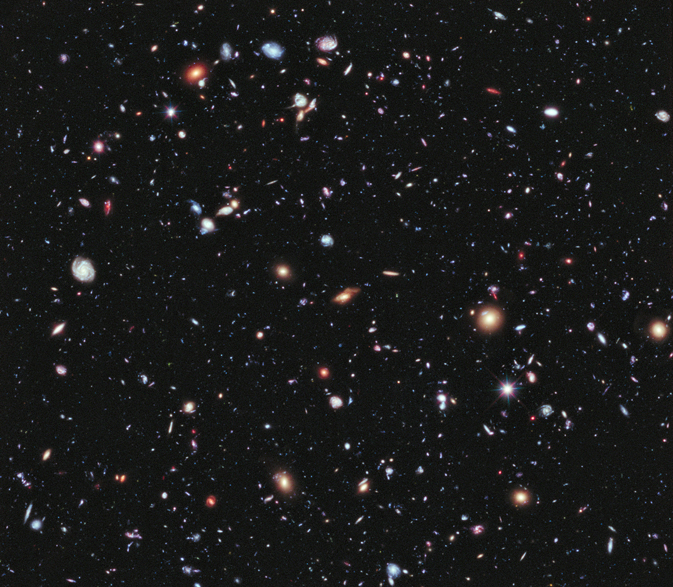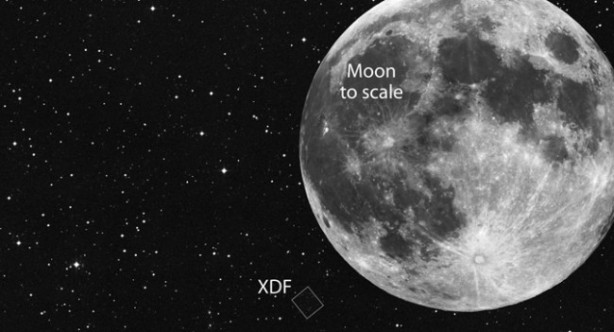eXtreme Deep field – Universe’s farthest view ever!

Yet another astounding photo by Hubble mission reveals farthest view into the universe. Called the eXtreme Deep field (XDF), it is a successor of Hubble ultra deep field image created in 2004. XDF (extreme deep field) is a full-colored image developed from photos taken by Hubble telescope over 10 years. Light captured over numerous sessions helped revealing the faintest objects with brightness as low as ten-billionth of what human eye can see. Garth Illingworth of the University of California at Santa Cruz, principal investigator of the Hubble Ultra Deep Field 2009 program said,
“The XDF is the deepest image of the sky ever obtained and reveals the faintest and most distant galaxies ever seen. XDF allows us to explore further back in time than ever before.”
Extreme deep field contains 5500 galaxies
Observation was confined to a patch of sky at the center of the original Hubble Ultra Deep Field as NASA’s Hubble mission page states. For a total of 50 days over past decade, Hubble telescope was repeatedly pointed at this patch. Total exposure time was 2 million seconds, capturing more than 2,000 images of the same field. Hubble’s two premier cameras were used: the Advanced Camera for Surveys and the Wide Field Camera 3, which extends Hubble’s vision into near-infrared light. Surprisingly, this small fraction of sky contains about 5500 galaxies.

Light travelling for 13.2 billion years captured?
“The early universe was a time of dramatic birth for galaxies containing brilliant blue stars extraordinarily brighter than our sun. The light from those past events is just arriving at Earth now, and so the XDF is a “time tunnel into the distant past.” The youngest galaxy found in the XDF existed just 450 million years after the universe’s birth in the big bang.”
Is there more to come?

Commenting rules and guidelines
We value the thoughts and opinions of our readers and welcome healthy discussions on our website. In order to maintain a respectful and positive community, we ask that all commenters follow these rules.